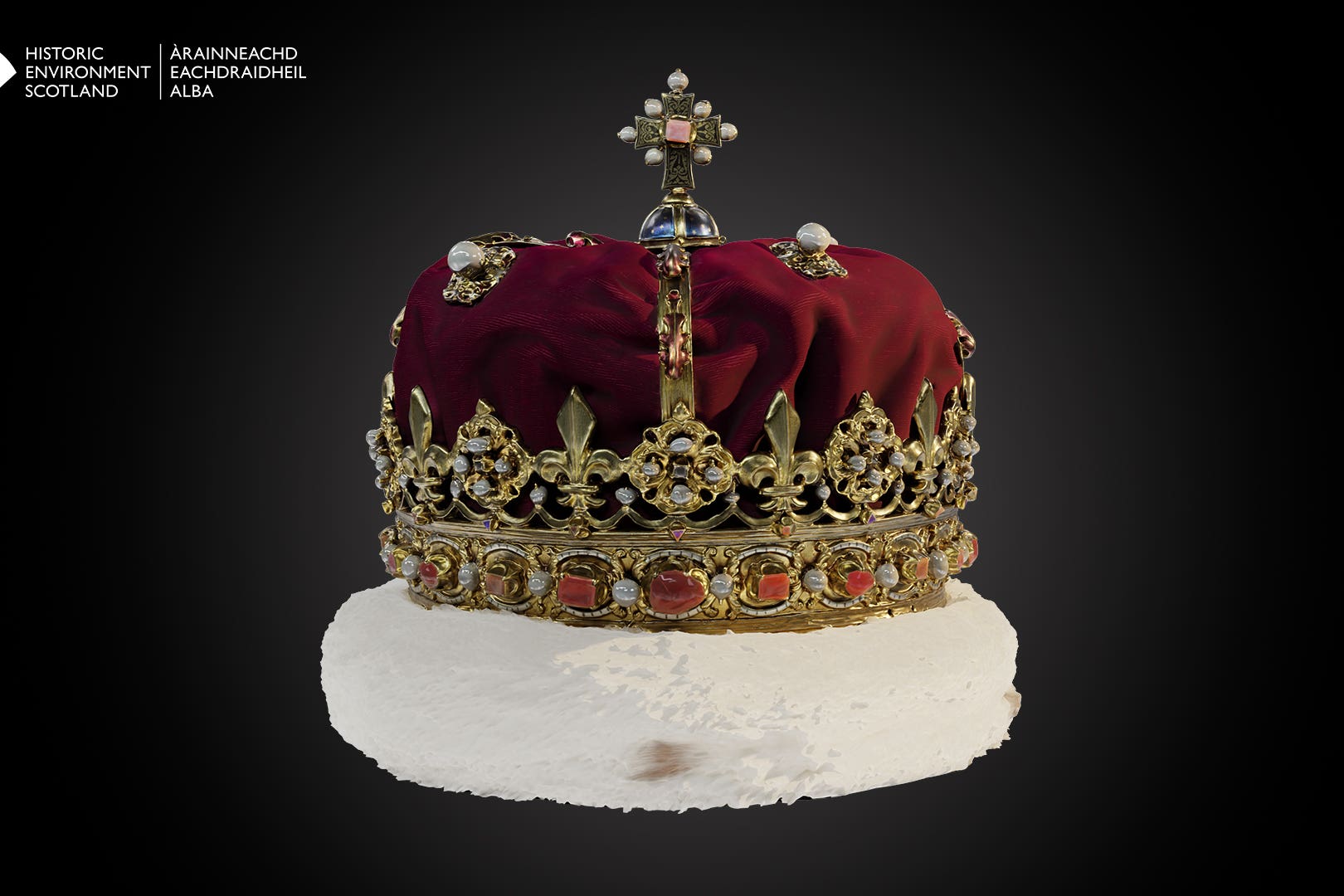New images of Scotland’s Crown jewels released ahead of royal visit
The Honours of Scotland comprise the Crown of Scotland, the Sceptre and the Sword of State and are believed to be the oldest Crown jewels in Britain.

Your support helps us to tell the story
From reproductive rights to climate change to Big Tech, The Independent is on the ground when the story is developing. Whether it's investigating the financials of Elon Musk's pro-Trump PAC or producing our latest documentary, 'The A Word', which shines a light on the American women fighting for reproductive rights, we know how important it is to parse out the facts from the messaging.
At such a critical moment in US history, we need reporters on the ground. Your donation allows us to keep sending journalists to speak to both sides of the story.
The Independent is trusted by Americans across the entire political spectrum. And unlike many other quality news outlets, we choose not to lock Americans out of our reporting and analysis with paywalls. We believe quality journalism should be available to everyone, paid for by those who can afford it.
Your support makes all the difference.The Honours of Scotland – the oldest Crown jewels in Britain and among the oldest in Europe – have been digitised to allow the public to view them like never before.
Newly released 3D models of the Crown of Scotland, the Sceptre and the Sword of State have been produced by Historic Environment Scotland (HES) to let people examine the intricate detail of the Honours up close.
As well as offering a unique perspective of the collection, believed to date from the late fifteenth and early sixteenth century, the 3D models will also be used to aid future conservation work.
The Honours were digitally captured through a process of photogrammetry, where hundreds of overlapping high-resolution photographs were taken of the objects then analysed by software to work out their relative position.
These aligned photographs were then used to create accurate photorealistic models of the artefacts, which were first used together as coronation regalia in the mid-sixteenth century.
The Honours are scheduled to be formally presented to the King on Wednesday July 5 at the National Service of Thanksgiving and Dedication which is due to take place at St Giles’ Cathedral in Edinburgh.
The blade of the Sword of State is said to be in a very fragile condition, having been broken and repaired in the past, likely around the time the Honours were hidden from the forces of Oliver Cromwell sometime in the mid-seventeenth century.
In order to protect the blade, it was retired from use some years ago with the consent of the monarch. The Lord Lyon has commissioned a new sword to be made for ceremonial purposes and HES has agreed to care for this new commission.
The Honours of Scotland have been present at many of the major royal ceremonial events over the past five centuries. Their centrepiece is the Crown of Scotland, crafted of gold and silver and laden with 94 pearls and 43 gemstones including diamonds, garnets and amethysts.
The Honours of Scotland are objects of unique importance in the HES collections, and we’re delighted to be able to offer a new way for our audiences to engage with them ahead of their role in the National Service of Thanksgiving and Dedication.
James V had the Crown made in 1540, likely in part from the earlier Scottish Crown which had been damaged, and first wore it at the coronation of Mary of Guise that same year.
The Sceptre is thought to have been a gift to James IV from Pope Alexander VI in 1494. The ceremonial staff is an example of High Renaissance Italian craftsmanship, with the finial formed from a globe of polished rock crystal and held up by stylised dolphins and three figures depicting St Andrew, St James and the Virgin Mary.
The Sword of State was gifted to James IV by Pope Julius II in 1507 and represents an exceptionally high quality of decoration. The arms of Pope Julius were used as the theme for the Sword handle design, with oak trees and acorns symbolising the risen Christ and dolphins signifying Christ’s Church.
Kathy Richmond, head of collections and applied conservation at HES, commented: “The Honours of Scotland are objects of unique importance in the HES collections, and we’re delighted to be able to offer a new way for our audiences to engage with them ahead of their role in the National Service of Thanksgiving and Dedication.
“Using digital technology in this way can help enhance how we enjoy, understand and protect the precious objects of our past.”
The Honours of Scotland have had a turbulent history. Edward I had removed the former Honours of Scotland along with the Stone of Destiny in 1296, with only the Stone surviving. The Honours seen today were pursued by Cromwellian forces, who destroyed the English Crown Jewels.
In 1650 they were removed for safekeeping ahead of Oliver Cromwell’s siege of Edinburgh Castle. Unable to be returned to Edinburgh Castle following the Scottish coronation of King Charles II in 1651, the Honours were taken to Dunnottar Castle before being smuggled out during a siege and hidden at Kinneff Kirk.
Only with the restoration of King Charles II to the throne could they return to Edinburgh Castle and be used for ceremonial openings of Parliament until 1707.
With the Parliamentary Union of 1707, the Honours were locked away in the Crown Room at the Castle, as they were no longer needed for ceremonial events.
They remained there until 1818 when Sir Walter Scott and others, with a royal warrant from the Prince Regent (who would become George IV), broke into the Crown Room, opened the Crown Chest and there rediscovered the Honours.
The digital models of the Honours of Scotland are available to view on Sketchfab website.